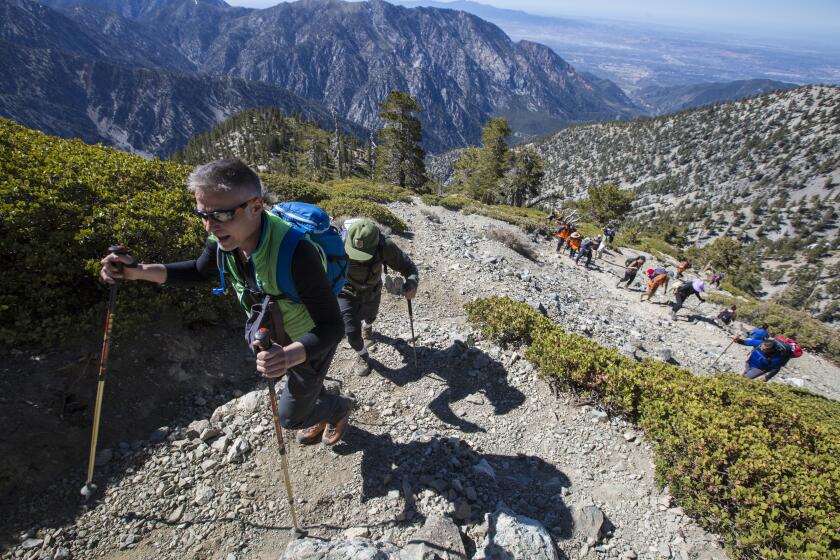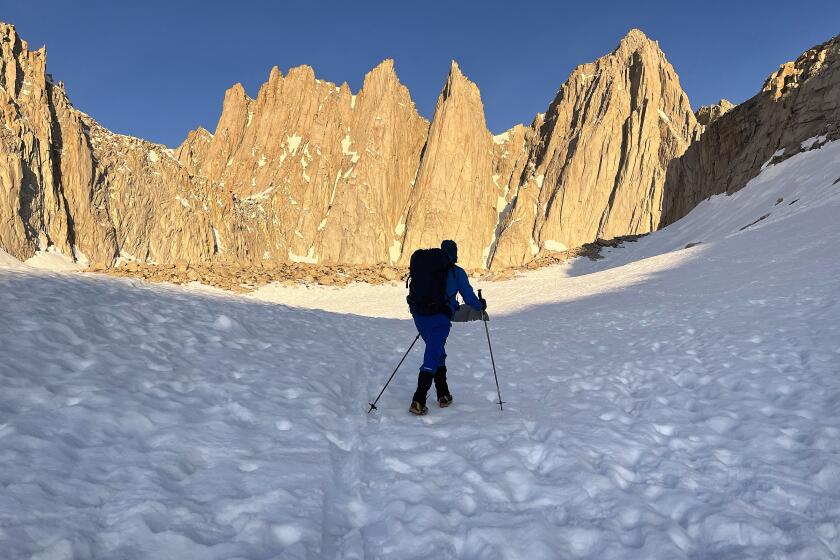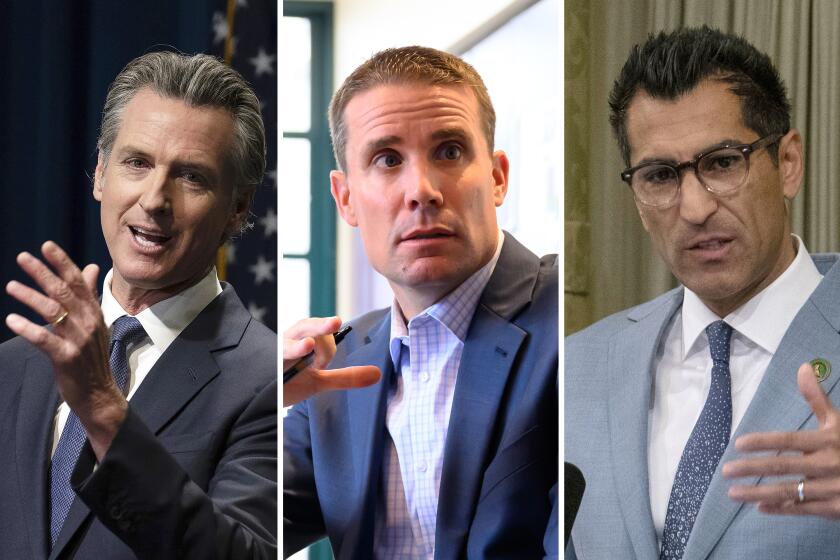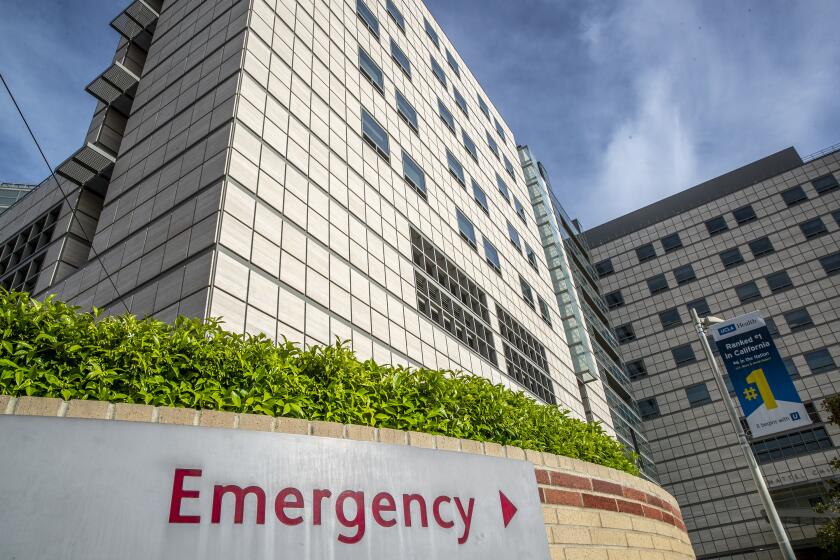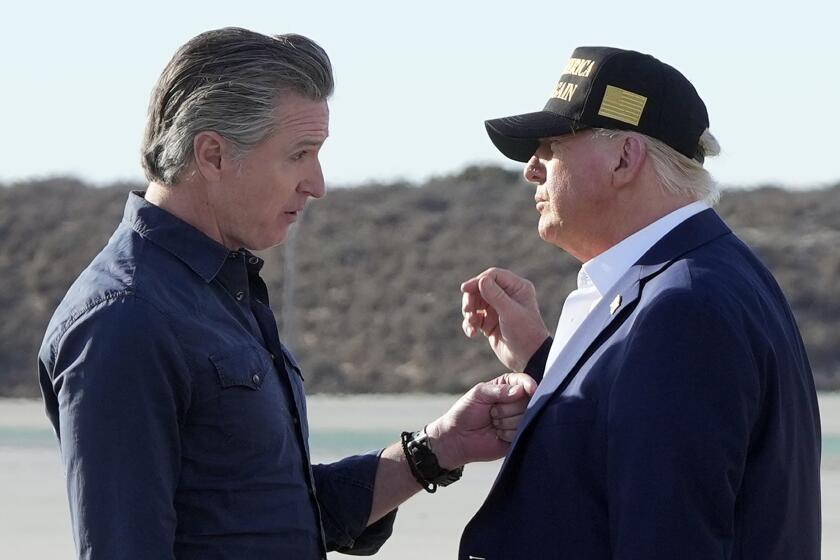A secluded Northern California waterfall is the latest victim of viral fame and crushing crowds

- Share via
BURNEY FALLS — By 10 a.m. on a recent Tuesday, the parking lot at McArthur-Burney Falls Memorial State Park was already full, and the line of cars waiting to enter stretched well back from the entrance.
Down by the newly Instagram-famous waterfall, there was yet another line, this time of people, as everyone took turns getting what they came for: a photo of themselves in front of the shimmering 129-foot wall of cascading water.
Erika Burgess, 29, who was on a road trip with her mother, said they made a point of stopping at Burney Falls — in the foothills of the Cascade range about an hour east of Redding — after seeing a post about the experience on TikTok. Nearby, Cheryl Martinez was taking photos with her family. She said she heard about the falls on Instagram.
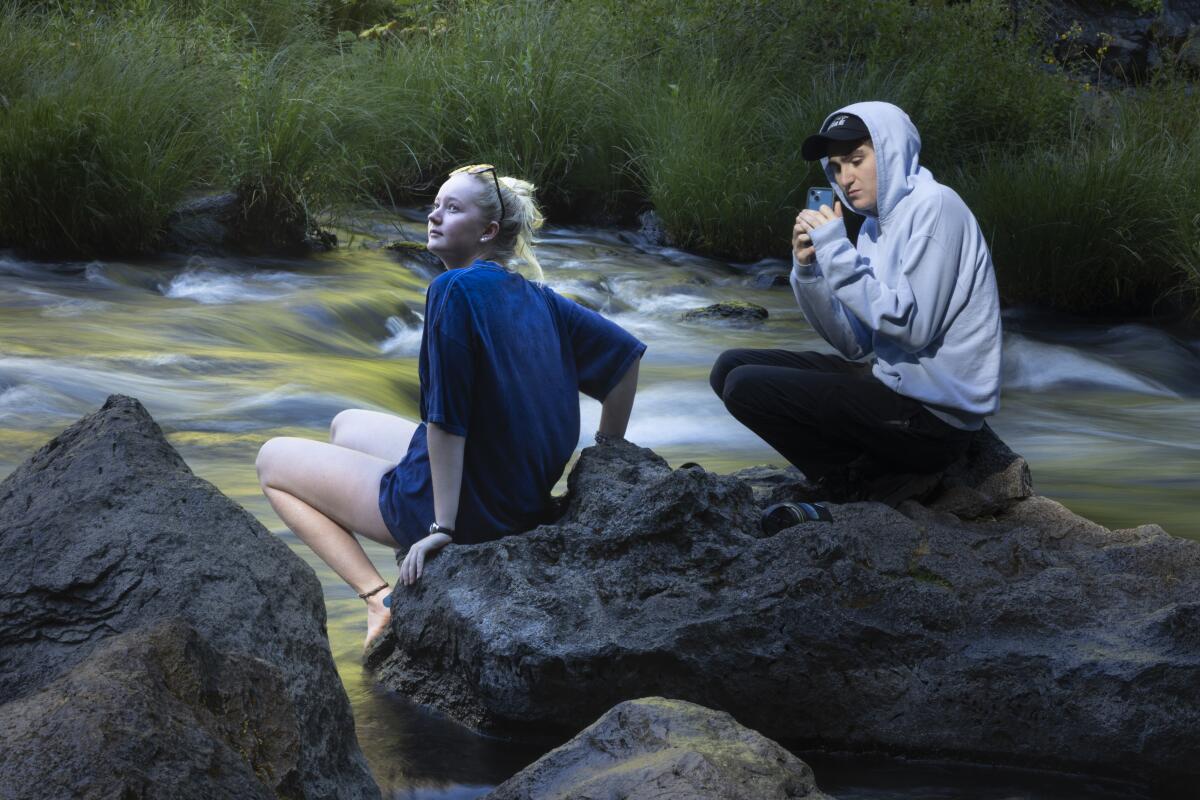
Stewards of America’s public lands dub it the “Instagram effect”: A vista gets geotagged on social media and the resulting influx of selfie-seeking visitors can become overwhelming. As far back as 2018, the Jackson Hole Travel & Tourism Board in Wyoming asked visitors to stop geotagging photos of the area to keep its most special sites from being trampled. In California, the problem is a familiar one for rangers who watch over Joshua Tree, Yosemite and the mighty redwood forests along the Northern Coast.
Now, post-COVID, Insta-celebrity has reached into the wooded ravines of rugged Shasta County. But unlike many of California’s popular destinations, Burney Falls — which President Theodore Roosevelt once dubbed the “Eighth Wonder of the World” — is in the heart of “red” California, where residents have long been suspicious of state government and its management of problems large and small.
That includes traffic on State Highway 89, one of the county’s main thoroughfares.
The entrance to McArthur-Burney Falls Memorial State Park sits on a bend in that highway. When its parking lot fills up, as happens by late morning many days from spring through early fall, cars waiting to enter the park can sit idling on the highway, causing backups that slow traffic to a crawl. Some drivers give up on waiting for a spot and park illegally on the highway’s narrow shoulder. Others, in fits of frustration, flip U-turns, sometimes in the path of logging trucks and other oncoming traffic.
Bob Boyce, who lives about a mile from the park, said on weekends he can look out from his home and see the traffic backed up more than a mile. It’s frightening. Drivers, he said, “go into that blind curve and you’ve got people parked on the side of the road. It’s amazing that nobody has been killed.”
“All of us up here love this park,” he added. “So it’s disturbing to us that we have this problem.”
Sandy McCullar, a volunteer at the Chamber of Commerce in the nearby town of Burney, said she loves the tourists who come to the park but wishes that state officials, who manage both the park and the highway, would do more to address the traffic.
“It’s dangerous. It’s not just bad. It’s dangerous,” she said.
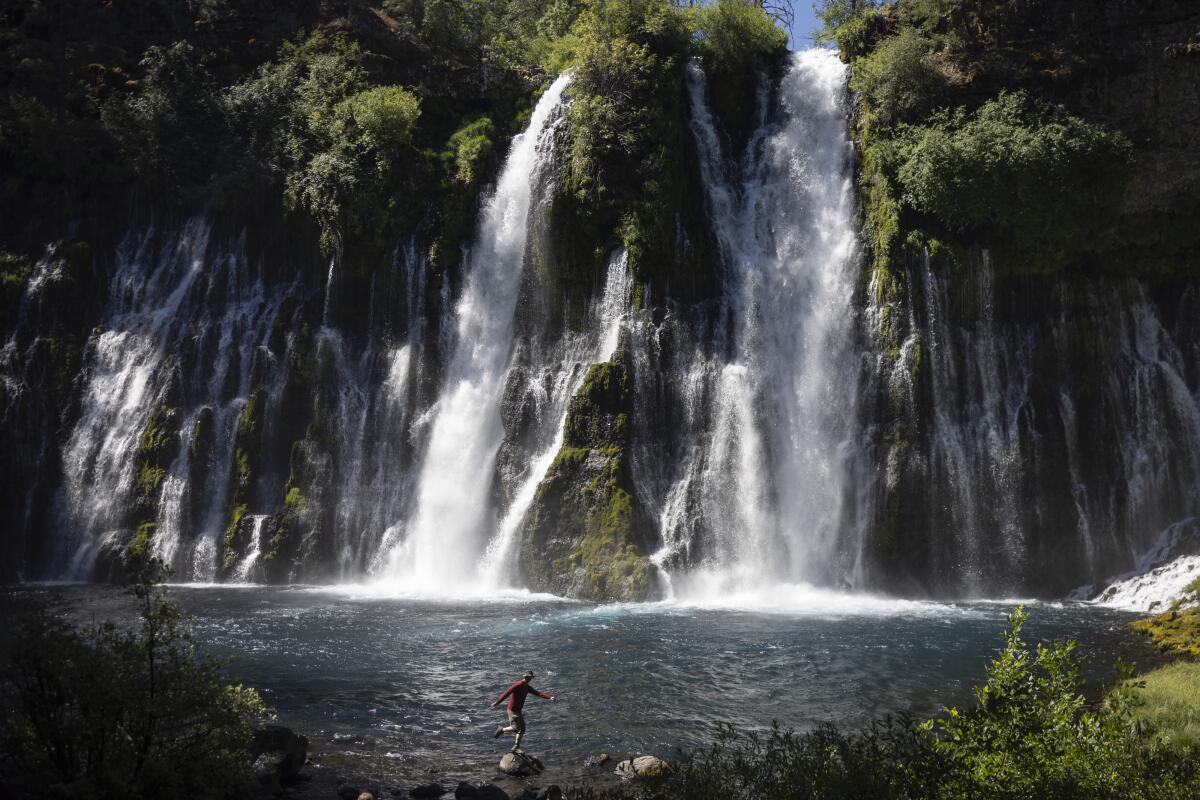
State officials said they are doing their best to manage the influx at the suddenly popular park. In recent months, the Department of Parks and Recreation has launched a social media blast of its own — basically warning the public of the high chances of misery if they try to visit Burney Falls.
“Anticipate long delays to enter the park, full parking lots, and extreme frustration,” parks officials wrote in a June post on the McArthur-Burney Falls Facebook page.
The post continued, as if determined to make any potential visitor understand the hardships they were in for: “If the park reaches capacity while you are in line to enter, you will be turned away.”
And even if you get in, the post warned, don’t expect smooth sailing. The upper parking lots could be full, and visitors could face “a 2-mile one-way uphill hike to see Burney Falls.” And to top it all off, the post said, visitors might contend with “long lines at restrooms” and “congested, slow-moving narrow trails.”
The post included photographs of people waiting in line for bathrooms and lines of cars mired in gridlock.
Some local leaders are calling for a more proactive and considered solution than the state hoping to scare people away.
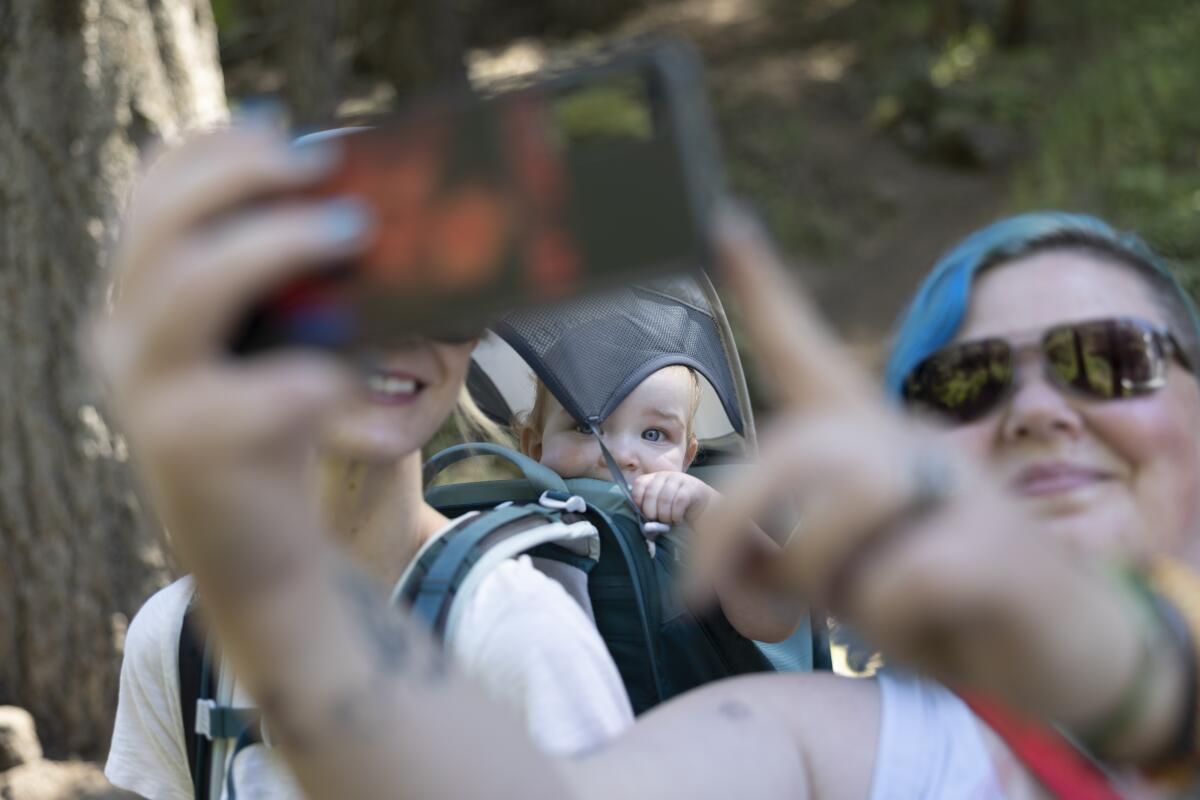
Shasta County Supervisor Mary Rickert, whose district encompasses the park, said the struggling mountain towns near the attraction need “the economic boom from it.” She wondered why state officials couldn’t do more to manage the traffic, rather than simply closing the park when the parking lot fills up and crossing its fingers that the traffic will eventually resolve.
Why not run a shuttle from Burney, she said, which would be “an opportunity to help the community” by easing traffic on Highway 89 and at the same time drawing people into shops and restaurants in town.
One way or another, she said, the state has to take more decisive action. “I’m concerned about people’s safety,” she said.
The hikers who found actor Julian Sands’ remains in a remote canyon on Mt. Baldy in June are haunted by what was missing from his safety gear.
Jason De Wall, northern division chief for California State Parks, said park managers “have explored the idea of shuttles” but so far haven’t found vendors who want to run it. “We spend a lot of time considering parking,” he added, not just at Burney Falls but at every state park.
In the absence of a parking fix, state parks officials have taken to urging people to consider visiting Burney Falls midweek, or taking a trip to a less-popular park.
Among the least visited of California’s parks, officials note, are Kruse Rhododendron State Natural Reserve near Jenner; Great Valley Grasslands State Park near Merced, which “preserves one of few intact examples of native grasslands on the floor of the Central Valley”; and the Arthur B. Ripley Desert Woodland State Park in the Antelope Valley, which protects Joshua trees.
Of course, none of those other parks boasts a 129-foot wall of water that generates its own vibrant rainbows on a daily basis.
Even without much snow, the standard spring hike to Mt. Whitney’s summit is a punishing ordeal. But in this year’s extraordinary conditions, it is a full-on winter mountaineering expedition, requiring serious gear and the expertise to use it.
Established a century ago, Burney Falls is the second-oldest state park in the California system, after Big Basin Redwoods in the Santa Cruz Mountains. Long viewed as sacred by the Pit River Indians, Burney Falls sits 15 miles from Burney Mountain. Snowmelt pours off the mountain and into underground springs that burst forth above and at Burney Falls to create the cascade. Rainbows shoot out from the falls in all directions, and a cool mist floats through the ravine even on the hottest summer days.
The area was made a state park after members of the pioneering McArthur family grew concerned that Pacific Gas & Electric would try to dam the Pit River for hydroelectric power and destroy the falls.
The odd thing to many locals is that for most of its 100-year history, Burney Falls was largely a local secret. Families from Redding would come up in summer to escape the heat.
And then came the pandemic. There was a rush to outdoor recreation, and outsiders discovered the falls. Many took to social media to post their photos. And off it went.
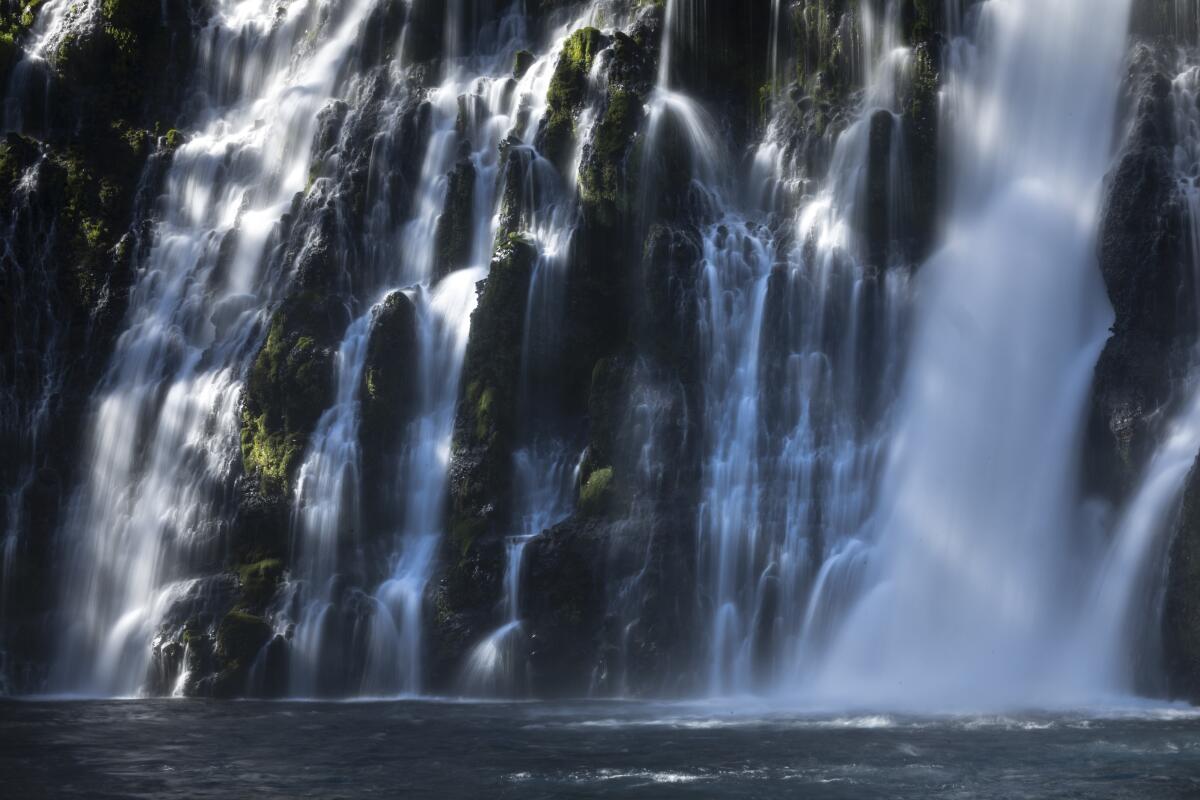
Lately, some park visitors have also take to posting about the crowds at the park. One post, from summer, depicted the expectations of a visit to Burney Falls versus the reality. The “expectation” portion of the TikTok video showed the park’s breathtaking beauty. The “reality” portion showed a packed trail of people plodding forward in single file.
Even in that video, however, the falls glimmered behind the human parade, shocking in their beauty.
For now, residents like Boyce have shruggingly accepted that despite their proximity to a natural wonder, Burney Falls is pretty much off limits all summer. “Too much of a headache to get in and too crowded,” he said.
But come fall and winter? “Oh, yes,” he said. “It’s beautiful, absolutely beautiful.”
More to Read
Sign up for Essential California
The most important California stories and recommendations in your inbox every morning.
You may occasionally receive promotional content from the Los Angeles Times.
